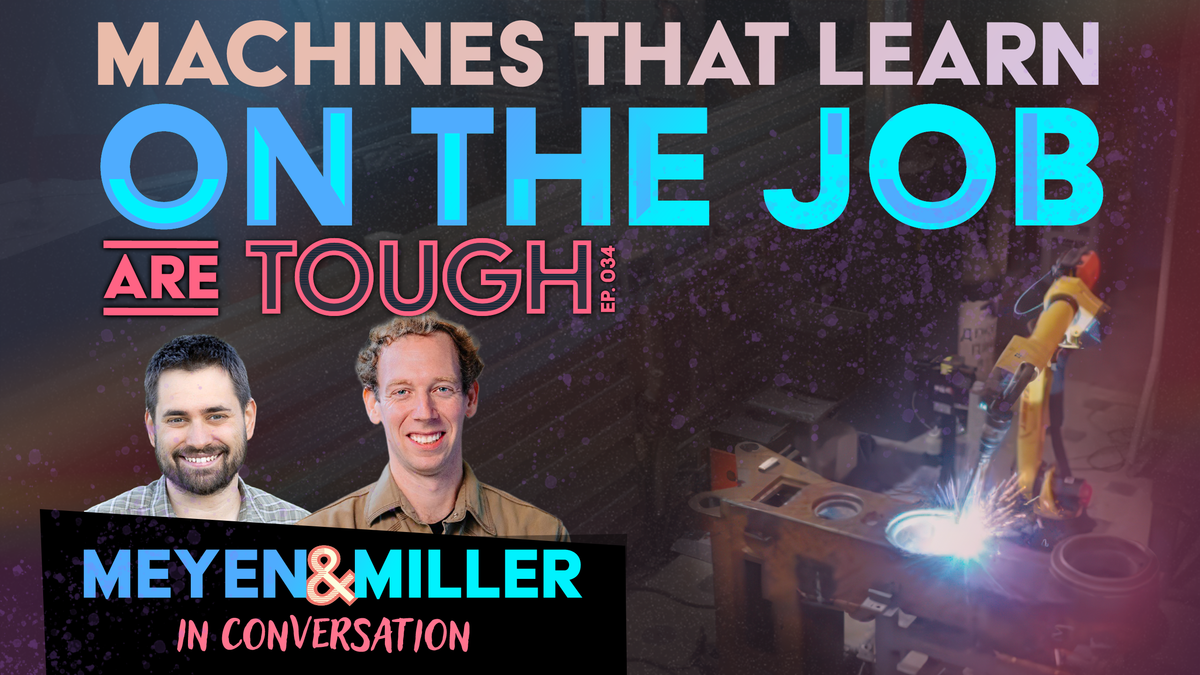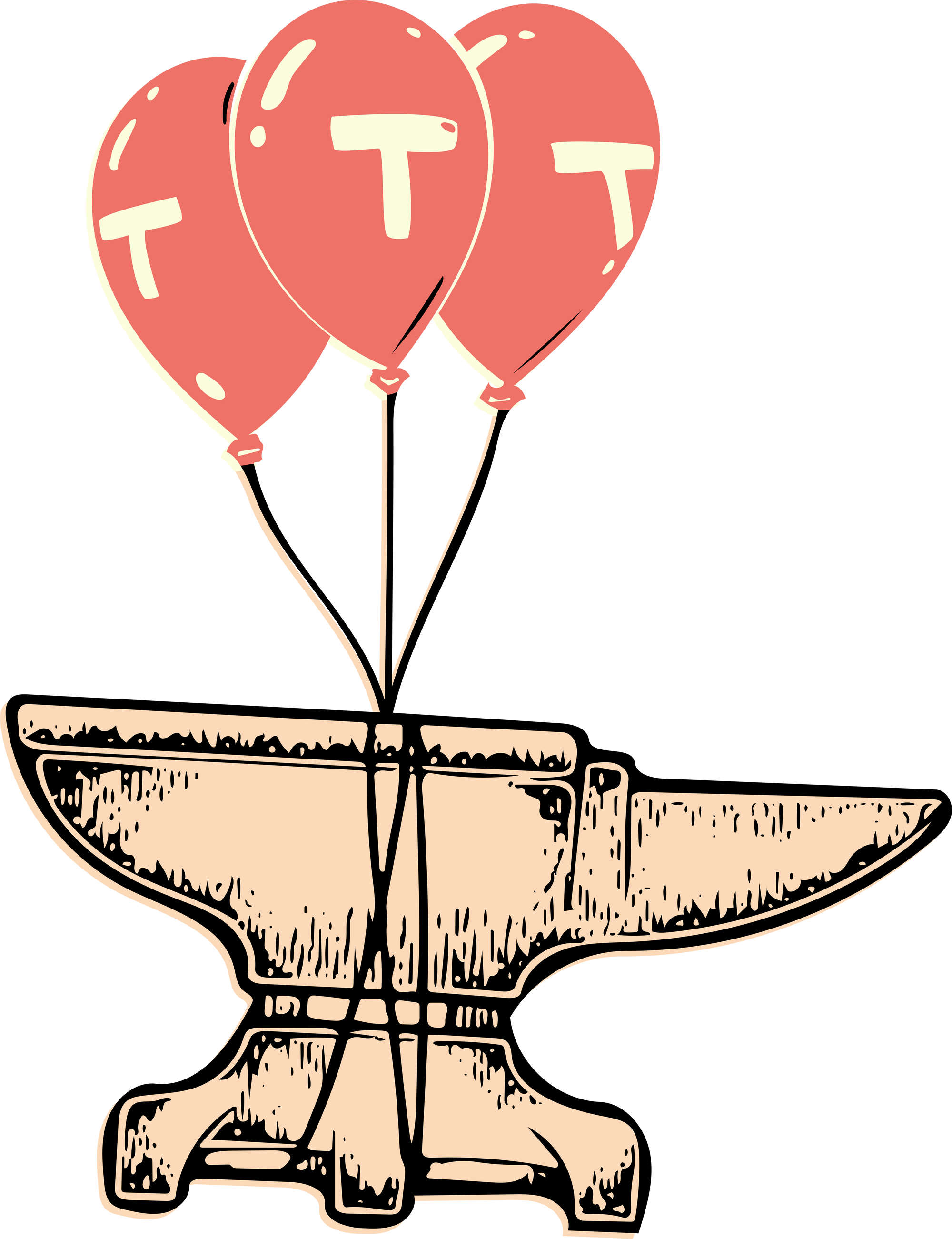Machines that learn on the job, featuring Forrest and JMill
The way to improve physical intelligence is to simulate, discover, and do.

Is the way to improve physical intelligence to simulate, discover, and do?
A dropped box tells the truth. That little skid and thud is a progress report one can feel. In this episode, Tough Tech Today Co-Hosts Forrest and JMill trace the full arc of “physical” intelligence: how we simulate the world, discover what to build, and then make hardware that learns while doing real work.
First, simulate: Before a wheel ever touches regolith or a gripper meets a crate, we spin up physics-rich worlds and run them by the thousands. This is not to find a perfect script, but to survive the imperfect ones. If a machine’s behavior holds up to domain randomization, messy lighting, uncertain friction… it may stand a chance on day one.
Then, discover: Imagine an autonomous lab bench where pipettes, sensors, and models conspire to explore their search space. The point is not cute demos, but rather new catalysts, sturdier materials, better routes to medicines. Humans keep the compass while the system earns its stripes by proposing and testing the next steps.
Finally, do: The shop floor is where timing and torque decide what actually works. Machine vision has been around for decades; what changes now is adaptation. Tactile data, trustworthy actuation, and feedback loops tight enough to correct mid-cycle help make open loops into closed loops. Ideally, we see waste reduce, uptime climb, and skills accumulate.
We also discuss the future of work and work-of-the-future. General-purpose agents capabilities will probably not arrive in a headline, instead percolating as a thousand small skills that survive contact with clutter, dust, heat, and schedule slips. That means building for failure an organization can recover from, staging rollouts, red-teaming the edge cases, and being clear who is on the hook when something goes wrong.
If we get this right, the wins will look, well, ordinary: fewer knobs to tune, fewer reworks, more jobs finished on time. But what is exception is that models are becoming matter, the foundation of systems that quietly improve with use.
And what about that dropped box? It becomes a better grasp the very next cycle, with the machine’s learnings shared across a hundred robots operating among a swarm, broadcast to thousands of work cells around the world.
P.S. Thank you to our tough tech champions. We really appreciate your support. We have pay-if-you-can membership options so you can help us bring Tough Tech Today to more folks!
🎧Listen
📺Watch
🧠Relevant Links:
- Episode homepage (this page)
- Forrest Meyen on LinkedIn
- JMill on LinkedIn
- MIT News: Using generative AI to help robots jump higher and land safely
👏Credit Roll:
- Producers: Jonathan 'JMill' Miller and Forrest Meyen
- Hosts: JMill and Forrest
- Editing: JMill
- Transcript: Jill
- Blog Author: JMill
- Art Direction: JMill
🔖Topic Timecodes:
00:00:00 Welcome Back: Machines and Intelligence
00:01:05 Defining “Physical AI”
00:03:10 Robots for Extreme Environments
00:06:00 Sim to Real: Digital Twins
00:09:20 Humanoids and the Future of Work
00:12:15 Manufacturing 2.0: AI for Materials
00:16:00 Ground Truth vs Synthetic Data
00:19:40 Space Ops: Millions of Sim Cycles
00:23:05 Terrain Truthing: Sand and Regolith
00:26:50 Agents That Tune the Models
00:30:30 Generative CAD, Patents, Liability
00:33:45 Guardrails, Audits, What’s Next
00:35:10 Monte Carlo and Scenario Swarms
00:37:00 Open-Loop vs Closed-Loop Manufacturing
00:38:45 In-Process QA for 3D-Printed Metals
00:40:30 Lunar Landings as Feedback Lessons (ispace, IM-1)
00:42:15 Fidelity vs Compute in Terrain Modeling
00:44:00 AI That Auto-Tunes Its Simulator
00:45:45 Data Scarcity in the World of Atoms
00:47:30 Hallucinations as Design Brainstorming
00:49:15 When to Use Quantum for Search
00:51:00 Mission-Level Commands in Unstructured Settings
00:52:45 Safety-by-Design and Aviation Analogies
00:54:30 AI-Native Organizations and the New Course
